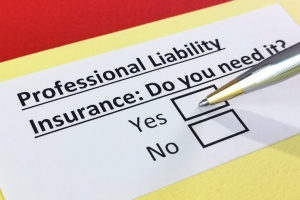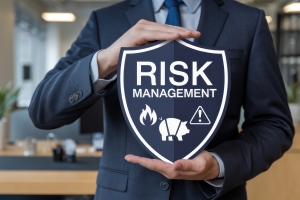 Professional liability protection is necessary for engineering firms operating in today’s complex regulatory environment. The increasing sophistication of engineering projects and rising client expectations have made broad errors and omissions insurance (E&O) for trade associations and engineering firms essential for protecting firm assets and professional reputations.
Professional liability protection is necessary for engineering firms operating in today’s complex regulatory environment. The increasing sophistication of engineering projects and rising client expectations have made broad errors and omissions insurance (E&O) for trade associations and engineering firms essential for protecting firm assets and professional reputations.
Liability reduction combines risk management principles, operational controls, and insurance protection to support engineering firms throughout their project lifecycle, from initial design to final delivery.
Professional Liability vs Standard Business Risks
Engineering liability exposure is not simply applying general business risk principles to technical services. Instead, professional liability represents distinct challenges that require specialized approaches.
Standard business insurance is centered on protection from physical mishaps and property damage. The objective is to secure coverage for employee injuries, damage to equipment, and routine business hazards through conventional insurance policies.
Therefore, while general business protection addresses basic risks and day-to-day safety issues, it does not offer sufficient coverage for professional service exposures. The result is inadequate protection for engineering firms that provide design services, project management, and technical consulting.
The goal of professional liability protection, on the other hand, is to make engineering risk management more complete. To address this gap, professional liability insurance uses specialized coverage approaches that improve risk management and streamline engineering firm operations.
Engineering firms will have coverage for professional mistakes with faster response times, significantly reducing financial exposure. Proper professional liability coverage naturally leads to better client confidence and operational stability.
Compared to general business risks, professional liability has an additional continuously evolving component. The professional service delivery framework involves client needs as inputs, which are then processed by engineers and turned into completed projects, designs, and technical solutions.
Professional liability protection is essential to this service flow because it protects, monitors, and manages the professional exposure throughout the process. One of the most valuable strategies for obtaining this protection is professional risk analysis.
What Professional Liability Protection Accomplishes
 Engineering services are more essential than ever, and many firms find that they can generate far more value for clients than they realized. However, the effectiveness of these services largely depends on how capable a company is of delivering them without exposing itself to liabilities.
Engineering services are more essential than ever, and many firms find that they can generate far more value for clients than they realized. However, the effectiveness of these services largely depends on how capable a company is of delivering them without exposing itself to liabilities.
The problem is that many engineering firms are not certain as to the most efficient way of delivering professional services while managing risk. They often adopt the principle of providing services with the hope that nothing will go wrong, which can result in even more issues instead of fixing them.
This implies that their professional employees must never make mistakes and always provide perfect results, so staff must be incredibly cautious. This makes innovation a challenge. Thus, it is practically impossible for firms to provide their engineering services quickly enough to meet client expectations.
Professional liability protection turns this uncertain environment into a manageable risk, so engineering firms do not have to spend their time worrying about exposure. Thus, they can allocate resources to their core mission of delivering quality engineering services instead of focusing on avoiding challenging projects.
Professional liability insurance establishes that professional mistakes are covered financially, legal defense is available, and firm assets are protected. This allows engineers to focus on their technical objectives and function more effectively.
Important Engineering Liability Areas
Professional liability policies are structured around several essential coverage provisions:
- Design and calculation errors: Coverage includes legal defense costs, settlements, and judgments arising from engineering mistakes, specification errors, and technical inaccuracies.
- Project management failures: Protection against delay claims, coordination errors, supervision mistakes, and deadline management issues.
- Professional consultation liability: Coverage for advice that leads to client losses, scope overreach, and recommendations beyond standard engineering practice.
- Documentation and reporting protection: Coverage for errors in technical reports, inspection documents, and certification processes.
- Client communication breakdowns: Protection against claims arising from inadequate communication, scope misunderstandings, and expectation management failures.
The Role of Risk Management in Engineering Protection
 Engineering firms increasingly turn to professional liability insurance to protect their operations while continuing to serve clients effectively. Risk management has become a primary reason for adopting complete coverage.
Engineering firms increasingly turn to professional liability insurance to protect their operations while continuing to serve clients effectively. Risk management has become a primary reason for adopting complete coverage.
Businesses experience a greater degree of pressure in terms of liability issues because of increased client expectations and regulatory attention. There is also more pressure from professional standards regarding service quality. So, engineering firms are turning to professional liability insurance to develop and maintain professional service policies that are protected but still allow projects to operate effectively.
One issue is the greater complexity of engineering projects that firms handle, which has led to increased liability exposure concerns. Most liability claims that impact engineering firms are generally the result of mistakes in service delivery. However, even minor mistakes can lead to major financial losses.
Industry data from insurance providers shows how severe this exposure can be. Almost one-quarter of engineering firms paid out claims reaching $5 million or higher in 2023, with approximately 12% of those cases going above $10 million.
The severity of the claims varies greatly. Structural engineering projects are the most expensive claims, accounting for 82% of highly severe incidents, followed by civil engineering at 59%, and architecture at 47%.
However, with the right professional liability policy, engineering firms will have all the protection they need to operate without concern, regardless of the particular services they provide clients.
CI Solutions Can Help Protect Your Engineering Practice
Engineering firms encounter particular professional liability exposures in their professional work, making specialized insurance knowledge essential. From design error protection to project management coverage, from individual engineer protection to firm-wide policies, engineering practices need broad professional liability coverage customized to their specific services and client commitments. With proper insurance, firms can focus on core engineering operations, knowing their professional activities have sufficient protection.
Contact us today at 703.988.3665 or visit us online to learn how our engineering insurance specialists can help design professional liability coverage that meets your firm’s specific needs and technical service commitments.
